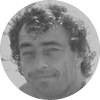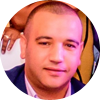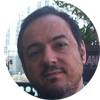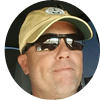52 Experts Contribute 156 Tips to Help You Start Theme Park Business
How to Start Theme Park Business?
Run a Google search and you’ll come across almost 447,000,000 results…
There are hundreds of procedures you could follow to start your park business.
So:
How do you cut through the noise and find a practical way that lead you to the right direction?
To get you an unbiased answer, we asked 52 theme park professionals a simple question:
If your friend want to start theme park business, which 3 steps would you recommend him/her to get started? (note: you can skip right to the responses here).
Here are the top 3 steps recommended by the experts… (by vote count)
1. Park Design (19 votes)
2. Market Research (18 votes)
3. Location (17 votes)
Now let’s take a look at each expert’s top 3 steps to start theme park business.
Responses are listed in the order they were received.
Gianluca Falletta
Theme park imagineer & show director at Luneur Park
1. Focus on the investment.
The entrepreneur will have to create a correct and balanced business plan with the aim of obtaining the capital necessary for the acquisition of the land, the building construction, the purchase of attractions, marketing, communication and, above all, the maintenance of running costs for the first three years since the start-up of the park. Based on the careful analysis of costs, objectives and staff costs, the adventure of opening an amusement park can be undertaken.
2. Carefully select the place to build the park.
The contractor must carefully choose the location where the park will be built by analyzing the territory in all its aspects to offer local visitors and tourists a suitable offer for them. Discovering the needs of the residents of a territory, analyzing how to intercept tourist flows and optimizing the offer is the first step to start creating the theme of a park and the choice of attractions and services offered.
3. Create a magical place.
After analyzing the available budget and the potential audience to which the offer will be directed, it will be possible to start thinking about the beauty of the amusement park, exploring a theme, creating a coherent look & feel, evaluating scenographic and design choices, hypothesizing memorable experiences for the audience. Creativity is linked to a budget and a precise timing: you must decide before starting the actual project what the goal you want to achieve is!

Director at Sunworld Park
1. Do market research.
2. Develop a unique value proposition in design, rides and guest experience.
3. Have the right expertise to install, and operate the park.
Wonwhee Kim
Co-founder at The Park Database
Here are the steps:
1. Perform a feasibility, even a back of envelope analysis is fine.
2. Design it.
3. Acquire land, secure funding.
Batuhan AĞMAZ
Theme Park Chief Engineer at The Land of Legends
1 – To imagine.
2- Theme park Location.
3- Creating visitor awareness.
1 – It’s important to imagine, but it’s important in your budget when you get this job. According to your budget, a master plan should be prepared and designed accordingly. it will help theme park consultants from professional teams. Everything goes like a chain in the theme park business. If it does not have a good master plan, it will not have good operation and a good technical team. I would like to give an example; When I gave a theme park business consultancy, the construction was finished and the park had been open for 2 months. The first installation of the ride may occur after the start-up times of faults. This ride belongs to the engine room made of underground. The construction started again to remove defective parts from the inside. because it was not planned correctly. This unit was shut down for 4 weeks in high season. There have been complaints by the guests. The team that will build the construction should have a team that knows this work, or the park operator will have many problems.
2 – Where to park in the city. one of these important factors. But this should be determined by what. should it be near the airport or the forest or the sea? there are some methods to specify this. This is one of the factors of the location of the park when it comes to the culture of the country. So what does these people do on the days of leave? A picnic in the woods? Swim in the sea? or shopping in places with large stores? That’s why the theme park’s location is important.
3- This is one of the problems of all theme parks. Continuously increase customer input. So how should this be? There are different methods for these. We need to keep the theme park updated. how is this update done? with very customer input. how do you attract many customers to the park? with a good parking location and theme park update. I call it the chain cycle. Finally, if you have a good technical team and good operation management, people return to their happy home. They will be eager to come back.
so The above 3 items are only 2% information on theme parks. For a good park you should think a lot of details and the ride choices even affect how many staff will work in the park. hundreds of questions like these should be answered.
Rick Lewin
Director at Theme Park Build Ltd
Always achieve the highest standard of workmanship, Use only tried and tested materials you are sure will look great and will withstand the test of time, Have the capability and knowhow to change and adapt a design at the last minute to suit client and design teams visions,
Above all make sure you have a good team around you that you can rely on to help you succeed.
Lester Silverio
Operations Manager at Dubai Parks & Resorts
If my friend wants to open a theme park, the first 3 steps would be.
1. Location- where is the location? There is so many things that you have to consider regarding the location. Is it a tourist spot? In the city, close to the city? Is it accessible? What’s the demographics? Local business procedure of that location? Is the location good for an outdoor themepark or indoor.. etc.
2. Brand- what is the brand? Is it an own brand? Or a franchise brand? What are the arrangement if its is, contracts? Intellectual Property Rights? If it is your own brand. How strong it is? Or how you can make an impact with this brand?
3. Market- what is your target market? Is it feasible? Marketing startegy? Competitors? Brand Campaigns?

(Former International Business Development at Six Flags)
1. obviously location location location with detailed research on population base and demographics
2. a theme and concept that appeals to same that fills a void in the market
3. dreaming big should not equate to building big. don’t overleverage before you even begin
Dong C. Chai
Expert Theme Concept Designer at Cuningham Group
Step 1: Research & Soul-searching. Theme industry is huge. Research will help define what niches or sector(s) one desires to work on – and can provide the most value at. This’ll also help define “who” to build connections with.
Step 2: Reach Out. Once niche defined, start networking. TEA, SLICE and association are great. But nothing beats the good-ol’ “cold calling” or “cold email”. TEA directories and LinkedIn are great sources for who to bug. I’d also do some homework on why types of professionals to bug. A sales associate might not be relevant for a freelance illustrator, but a fellow freelancer, art director or creative director might! If they don’t respond, give them space but keep bugging them until they ask you to stop!
Step 3: Have A Team In Place. Often clients will ask for products or services we can’t provide. Don’t turn them down just yet. Team up with a CG artist, graphic designer, web designer or whatever you’re NOT good at, so when prospects come, we build rapport and help – by referring them to our “friends” who can help. Money is made by helping people, and more people we help, the more money we make.
Fernando Algar Lizana
Park Operations at Dubai Parks and Resorts
When you are planning to open a new ThemePark, there are 3 fundamental points in the design and planning:
- Number of visitors: In my opinion, it is one of the most important points in the design phase. Certain companies perform feasibility studies. These studies indicate demographic factors of the area, cultural, economic, … and estimates the number of annual visitors. (normally for several consecutive years). In this way you can design the entire park based on these studies.
- Park design: it is really important to design the park with the feasibility study. On many occasions, very large parks are designed for very low attendance. This can cause extra costs in daily operations, in addition to construction.
- Attractions: it is important to know which public you want to orientate your theme park (Children, Family, Teenagers …), based on that, you must make a distribution and choice of balanced attractions. For example, if you want to open a family park my recommendations would be (20% Kiddie Rides, 65% Family Rides, 15% Thrill Rides). Based on the annual visitors, the studies of peaks, inparks, etc. are carried out in order to design the park for a Design Day.
- F & B
In the same way it is important to carry out the study for F&B, that is, number of seats and tables, types of restaurants (FastFood, Buffet, …) always focusing on the number of visitors and the characteristics of the same. The design and f&b needs for a water park is totally different than for a theme park. - Review of the project: After working on several projects, from the conceptual design phase, it is important to trace and follow closely each of the design decisions. From the number of ticket sales offices, distribution of buildings, number and location of bathrooms and services, to the positioning of bench and bins. (A mentor told me… “From any point of the park, you must ALWAYS need to see a bin”)
Paul Young (President at Amusement Resource Connection)
I would tell them 1st go to a convention / trade show
second get as much education as possible. Then location, location, location.

Operations Manager at Merlin Entertainments plc
1) Always consider the customer experience in your design.
You have to consider the requirements of the customer and how to allow your guests the ability to enjoy themselves, whilst feeling like they do not need to plan every moment of their visit.
2) Understand your brand and theme
In order to get the best design, you need to fully understand your brand and your reason for being. You need to make sure that if you are themed as a space theme park, for example, you do not have historical theming unless it makes sense. This allows both other businesses and the customer to buy into your ideas.
3) Accept that you can’t do this entirely on your own and the way to make this a success, is to surround yourself with a team who are there to enhance your ideas.
It is unreasonable to expect any one individual to be able to understand every element of a theme park, they do after all include; F&B, Rides, Customer experience, marketing, welcome, car park logistics, maintenance etc…. It is therefore important to surround yourself with a team you have carefully selected, who can support you to make your plans a success. You could plan where the rides are going to go and the theme etc and then send them on to a mechanical engineer who can design the technical elements, but if you are trying to do it all on your own, there could be elements you miss along the way that could drastically affect your plans further into your plan.
Brittany Filho
Senior Manager at LEGOLAND FLORIDA
I would suggest first thing is figuring out your target market. Who are you trying to reach? What is your brand narrative?
Next would be what is your cultural narrative? Your purpose, vision and values for your company. This would be employee experience.
Last would be your strategic narrative. What is your strategy, purpose, business objectives, financials and PEST influences.
Alan Williams
Principal Architect at FUNCO
I would say that if anyone decides to build a theme park it’s all down to three important factors:
1. Audience
2. Budget
3. Concept
1. Probably the most critical of factors on the list, is the Audience or the Visitor. Understanding the spending power of your customer and the target audience is a make or break decision for any business. Does your operations account for the various spending segments and do you have what it takes for them to reach into their pockets to buy tickets or that merchandise on display? Your theme park should cater to the needs and aspirations of the larger population and taking that into consideration is prudent.
2. Deciding the budget for a theme park before hand cannot be stressed enough. Just as you have to set your targets and goals, you also have to decide a budget and plan for all your eventual expenses to make sure your theme park will be able to grow or correct it’s course along the way. Budgets for your design, fit-out, pre-opening, marketing etc. are all crucial and you want to be able to give everything that your theme park will require – whenever it does!
3. As a designer myself, I would definitely include the concept on this list, because that is what your park is actually about! It’s what brings life to your machines and props – the story you’re telling! Creating your story for your theme park and allowing your guests to embark on this journey makes the entire difference between a repeat customer or someone who will never visit again.
Mark Lofthouse
Experience Manager at Dreamland Margate
If your friend want to start theme park business, which 3 steps would you recommend him/her to get started?
My reccomendation would be to research as much as possible. Go to as many different parks as you can – see what other people are doing and put yourself in the footseps of your guests. It’s important to see anything through the eyes of the customer.
Theme park designer
I would always recommend research, read, browse watch videos, contact people, professionals anyone who can give you expert advise, speak with consumers get their opinions. Prepare yourself and know your target audience
Be confident, never doubt yourself. Know that when you get knocked down or when something doesn’t go to plan, because let’s be honest nothing ever goes to plan and everyone fails at some point to pick yourself and to try again. Don’t let it knock your confidence and make sure you have a support system with you to keep you in the strong path.
Chose the right team. Get a strong group of labourers and workers. Get a team committed to the project, the team who always know there is room for improvement, that are committed to pushing themselves and be committed to work long hours. Walt Disney said ‘it’s kind of fun to do the impossible’ make sure you never loose site of why you’re doing what you’re doing and enjoy every moment of it, make it a memory and make it last then create and share it with others and most of all remember to always smile no matter how bad it is it could always be worse. Nothing ever goes to plan and nothing is ever easy but the adventure and the fun part is always the journey and how you get there.
Hany Elsherif
Establishment Manager at KidZania Dubai
One choose your right location
Two do market research and pick the right concept
Three choose the right management
Lara Antoinette Tan
Project Director at IQPC
Market research about the Theme Park and Entertainment industry in the prospected region would be good start! Understanding the needs and the wants for effective planning, sourcing of suppliers (contractors, vendors, consultants, etc.). From hereon, right people and right connections will follow. Coordination with the right organizations, IAAPA as the Global Association for the Attractions Industry would be the best go to. Being up-to-date with the current events in the sector through conferences gives a better light on the project for competency, best practices from Entertainment giants, financial capacity, challenges and solutions.
Ammar Yasin
Director of Business Development at Meraas
1) understand the size of your market and it’s appetite for another theme park, both resident and tourist.
2) depending on which country your planning for but location location location.
3) build an accurate 10 year model to clearly understand your cash flow over that period knowing fully well this is a marathon not a sprint. You need to model your cash flow on accurate data for footfall, revenue, SPH on retail and F&B…etc
Tonya Pope
President at Jazzland Theme Park
It would depend a great deal on what type of theme park business, but I’d recommend 1) researching similar businesses, visiting them if possible, 2) attending an IAAPA convention, and 3) researching current trends in the industry and projections as to what direction things are going.
Rachel Helen Colegado
Park Operations Admin at DXB Entertainments
1. Survey the country/weather/economic status.
2. Once above is done, work on th4 design and what kind or rides is suitable for the country( always think of the regular customers who lives within the area/tourist comes seasonal depending on the weather)
3. Come up with an attractions which is unique and never made with any theme park.
Former Operations Manager at New England Fun Centers
If they where to get started the first and MOST important thing is location. You need to make sure there’s a need. You don’t have another park (IE six flags or cedar fair parks) too close, their budget is intense. Second would be to visit competing parks. Study the line dynamics and the flow of people in and out. Third would be to hire an amazing team to help take your reality out of your head and really make it into a tangible reality.
Joshua Overcash
General Manager at Asphalt Maintenance Group
The first step would be to do as much market research as humanly possible.
The second step would be to recommend to him or her to visit as many similar theme parks as possible and compile a list of things that he/she likes and dislikes.
The third suggestion would be to research all the theme parks that have failed in the past 20 years and put together a report of why he/she should not open a theme park.
If, after that report is read and he/she still wants to go ahead with building a theme park, I would support them as much as possible.

Owner at Hauntrepreneurs
When someone approaches me about starting any entertainment facility, my first approach is to talk them out of it. There are much easier ways to make a living, but if they have their hearts set on it, I make sure they are approaching it as a business.
A business MUST be profit able to survive, so when you complete your business plan, make sure the bottom line of the P&L says “obscene profits!” If it doesn’t, rework the numbers until it does. Increase advertising, add elements, add retail, add upsells. Remember, if you don’t make any money, then you don’t get to play anymore!

CEO at Operatorland
Long story short is to understand the market, clientele and size of the investment. I believe multi-pursope location is the future. This is not a new invention but a proven fact.
First step would be pre-concept design, pre-master plan and pre-business study. Based on the information we can draw preliminary road map for development in stages.
Second step would be Stage one concept design + experience centre to attract the investors.
Following steps woudl be detailing phases and development in stages. Starting minimum capacity operations and gradually expanding in line.
Survey is very important part for designers and feasibility consultants to begin with.

Owner at Yael Pardess Designs
Steps I would recommend: join a group of professionals that work in the theme park business like TEA. meet at IAAPA or other mingling events and exchange cards and ideas, set up meetings, distribute your cards brochures and online work samples.
It is important to know the business you approach so study up on what companies do, get to know the people, visit the attractions they created, be familiar with requirements, guidelines, regulations, so that your services and products match what is needed.
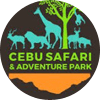
General Manager at Cebu Safari & Adventure Park
Step 1: Do a market/feasibility study if such business will thrive in the area.
Step 2: If the result will be positive, touch base with experts who can help in the development, construction and operation.
Step 3: Create a master plan and time line.

Operations Manager at Ozone entertainment
I think first thing to is the what available in the 30km diameter and Competition through market research, the size and Fec combination machines&rides &play area…etc and of course total investment needed.
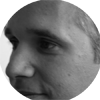
General Manager at Angry Birds World
First think I would say is: clarify your main goals. Focus on your idea of bring entertainment and applying your fresh ideas. Not focus on the profit. The money profit is a consequence, not an objective.
Second: as a local-based entertainment, be aware of your geographical location and study it carefully (population, GDP, available transport etc.)
Third: be realistic (even below your expectations) with your P&L. Have a close look at the existing market and don’t believe you are unique.
And the last one for free: marketing is the pilar of your business. Plan almost 7% of your revenues for marketing and spend until the last dollar! Savings in marketing means loosing revenue!

Operations Supervisor at Sun & Shade resort
If my friend want to strt theme park business
1) Location -everyone can reach easily to visit.
2)Park occupancy and Ride occupancy should be in the same level like if 1 ride guest catering capacity for 9 hours is 7000-8000, total park should not take more than 10,000 guest.
3)To run theme park business is so expensive ,some of the rides or attractions will take so much of electricity, to reduce electricity power theme park like washroom, street light,guest waiting area,restaurants,parking,etc that we can run in solar energy power, we can farm our own vegetables garden inside the theme park and many more ideas which we can run smoothly to run the park.

Operations Manager at Permai Rainforest Resort
I will recommend;
1. Identify target market / market segmentation
2. Research current fab or target market current preferance
3. Consider the theming and IP
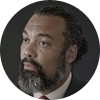
Owner at KWP Limited
1.Research
2.Feasibility Studies
3.Business Plan
All supported by hiring a good consultant.

Park Director at Swanley Park
1. Secure Financial Backing
2. Obtain a Sufficient Number of Building Quotations
3. Secure Planning Permission
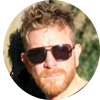
Owner of Hugo Vogel Theming Works
I think the first step is the “idea” of what we want to achieve, what we are going to offer, where we will do it and what to publish, then a viability study of the project (permits, etc).
Second to develop the master plan with an adequate design team, it has to be an innovative project, and of great visual impact, that enters through the eyes of the investor.
Third and last, to present the project to investors and to have an organized work team, the artistic and creative direction of the project must be independent of the subcontracting companies and work with the owners of the project. I hope you find it useful, and you can count on my experience for any future project, greetings.

Owner at DTG-Amusements
1. Get ‘real’ world experience in the themed industry. So this could be projects in theme parks, themed restaurants or in my case a museum (I worked on a themed exhibit).
2. Built up a portfolio and start showcasing the realized projects with the design you made. And showcase creative non-IP driven ideas/designs from yourself.
3. Go to theme park expos and tradeshows and meet the professionals with your portfolio. Make sure to get business cards and discuss setting up meetings after the Expo.

Director of Operations at SkyTrek Adventure Park
1. Feasibility study
2.Government regulations for theme park in his/ her region.
3. Research new trends in the industry
Founder at Nick Winslow Consulting
First, a few questions.
1) Do I really want to be in this business? It requires a huge amount of capital, is labor and capital intensive, and is high risk considering the potential returns. A theme park cannot be converted into warehouse space or condos.
2) Do I have a site, or can I get a site, that fulfills key criteria regarding access, compatibility with surrounding land uses, cost, entitlements, competitive environment, utility availability, topography, size, etc.
3) Do I have access to sufficient front-end money to carry out the initial planning and feasibility studies, and a reasonable approach to permanent financing? If yes to the above, then I suggest.

Owner at Frank Design Group
One: As you are looking for a site for the Themed Development, hire a feasibility consultant that understands the market, they will provide critical feed back on the viability of the location, the size/amount of property needed and the critical capacity numbers that will help with financial projections as well as design requirements.
Two: Once you have a potential site. Hire a reputable and proven Themepark/Entertainment Design Firm to provide a concept/bluesky package that helps to define their overall vision. This team would work in tandem with the Feasibility Consultants to help refine the project in both design and financial modeling.
Three: With the site selected, initial concept approved, and a quality design team is in place there are several levels of design and planning that are required to move the project from concept-through design-to construction and finally opening day…At some point in the design process, usually at end of schematic design beginning of detailed design an operations group should be consulted and the design package should be reviewed to ensure that it can operate in a clearly defined way.
Now this is a very brief introduction into the Themed Entertainment World. Finding someone that has been in the industry for many years to be part of their internal team can help to navigate the initial steps and outline the process in a more detailed narrative and help to avoid missteps as they grow in the Themed Entertainment Community.

Design Consultant at Opak Creative
1.) visit successful, well-known theme parks to witness & learn what attracts their guests.
2.) engage in a feasibility study to better understand what formula works best in the location you are considering.
3.) hire the best talent in the industry to design/build your entertainment venue.
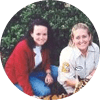
Manager at Huitt-Zollars, Inc.
1.Securing funding.
2.Securing IP’s that will bring guests through the gates and hire talented designers to bring to life.
3.And finally, order your rides early. Get the contracts in place.

Owner at Abasicservice
1. Locate two or more possible sites. Do not buy site at this early stage.
2. Describe your park, focus on listing revenue production areas.
3. Have professional, preliminary feasibility/market analysis accomplished.
4. Do not proceed or start if your funds will not pay for 1-3. Do not proceed if your present funds do not cover ten percent of total, estimated construction cost.
#41. Edward Fasso (Managing General Partner at Zone Recreation)
Attend as many trade shows (IAAPA, etc) educational seminars (Foundations University, Birthday University,etc) as possible. Visit other venues, even the bad ones so as to learn from their mistakes, and hire people smarter than you.
Operational Specialist at International Theme Park Services, Inc.
I would highly recommend that anyone planning to open a theme park first conduct a feasibility study through a reputable consulting company. This allows your plan to receive a fair and open examination.
Second, I would suggest using a design firm, instead designing in-house. The skills and knowledge these firms posses will save headaches during construction.
Third, I say think way outside the box; be unique.

Operational Director at Bali Bird Park
Step 1
Determine what is the theme of the park you wish to make and what will be the unique selling point/s (the tallest roller coaster in the country, display of critically endangered species in case of a zoo, etc.). Something that gives a reason / reasons for people to visit your theme park though there are similar parks around.
Step 2
Analyze the market in the designated location of the park. Are there more tourists, or residents, or both ? Nationalities, interest, buying power, seasonality. If the park is in a holiday destination, the park must be attractive for both tourists and residents so when the tourists season is in the low, you still get business from local visitors promotion.
Step 3
Study the cost of building and running versus potential revenue and development. Decide if your theme park’s module is correct or do you have to modify in size to get more income, or change the theme to suit the interest of major market segments, or it is just right.

Operations Manager at FEC Snow Park
3 steps to opening a theme park:
1. Choose the people:
Assuming we start from scratch, choosing the people who will handle the project with you is vital. Your project manager and site coordinators will deal with contractors coming on site for construction, installation of rides, decorations and IT equipment… and that can save up on a lot of delays if your team is invested in the project.
Your admin team will deal with all the documentation, budgeting, purchasing and custom clearance… and will do research for the best suppliers that best suit your theme park.
Having a team that not only reports, but takes responsibility and actions is crucial to starting a theme park.
2. Design:
Factor in the surface area, height (if indoor) where you will operate in to get an idea on how many major rides you can install, how many arcade or group games you should have… Once you got the general idea. Look at the culture in your area of operations, is it more family friendly or young adults. What do the other themepark nearby have? What do the people need. Conduct surveys and research. Blend in all the data you get and create your design. Have it reflect a mission and not just games, how will it make the people feel to come to your theme park? Make it as magical as possible as theme parks are often a place of escape for adults and fun for kids.
3. Set your operational plan:
Create your standard operating procedures, test them with your operators and find ways to make them fun. Create a show or a story out of them. Don’t let it be a push the start/stop button. Entertain your operators and they will entertain your guests.

President at Theoreme Ingenierie
Je lui recommanderais d’abord de réfléchir aux valeurs qu il veut véhiculer sur sont projet. Afin que ces dernières soient un élément fort et identifiant.
Ensuite il me paraît incontournable de faire une étude de potentielle visant à identifier a qui s’adreesera ce parc en travaillant son contenu et son rayonnement, il est en effet nécessaire de tenir du besoin de 0 à 45 minutes autour du futur site, quitte à le faire évoluer. Ce travail permettra ensuite de passer au volet économique à savoir business plan qui a pour objectif à ce stade de valider une faisabilité, de faire les ajustements nécessaires et déterminer les niveaux d’investissements au regard du potentiel de de chiffre d’affaire.
Il découlera de ceci un master plan cohérent ainsi qu’une identité visuelle correspondant a l’ADN du porteur deproejt.
Trop de projets sont pris dans le désordre ou ne sont pas consolidé et n’aboutissent pas. C’est au travers de nos méthodes approuvées que nous avons un taux detransformation élevé chez Théorème ingénierie.
Operations Management at Family entertainment centers
However ,you need first to identify target audience and location that could be easy to attract customers ,and most importantly create your team . building the team from scratch by focusing on training and work on best and worst scenarios that could take place in operations or in dealing with customers .
if you design soft play theme parks for example then your target customers has to focus on kids or less age range customers .but if your theme park has variety of rides and games suitable for all age types then you have chance to widen your customers group .
theme parks in different types and sizes preferred to to have party hall or place to make birthday parties with affordable price where kids and family can book their celebrations , also a gift shop with full redemption toys and logos or brands of the name you choose to your theme park always attached to some toys or t shirts ,etc .
Mascot or theme character to be designed is very important to be at front in all communications and presentation to connect with customers and have their loyalty . not to mention ,social media and online booking is necessary to keep customers loyalty .
People like to eat and celebrate in the same time ,and to make their entertainment experience complete ,its vital to surround your park with restaurants or food zone that has your logo or brand .
Safety is the key of happiness ,should be not ignored as well in all the cycles of designing the theme park.
Theme Park Designer
1. Study the industry. Get to know the theme park business from articles, books, magazines and personal visits, knowing there is a lot to learn even before getting started.
2. Get yourself out there. There’s nothing like IAAPA / TEA events to learn the most useful skills while networking with professionals from around the world.
3. Be ready. Always keep your curriculum vitae updated and at hand and train to give the perfect job interview. If you love this industry and you know you’re on your right path, somebody will notice!

President at Coney Island Amusement Park
1. Site Characteristics: Is it large enough and is the topography easily developed?
2. What is the proximity to your projected customer base? Is it easily accessible? Are utilities readily available? Are there any zoning issues or building restrictions?
3. Competition; Industry trends…A review of comparable and competitive facilities. Does your project fill a need or a niche’?
A complete concept review
Determine investment levels
Develop attendance estimates;
Project revenues/expenses
Determine potential cash flows and returns
This allows you to justify your concept by having an experienced, reliable third party give you their perspective and analysis. Without a solid feasibility study, gaining financing for any project is virtually impossible.

When you start a Theme Park business you need to consider flowing 3 main factors.
1. The feasibility study of business (Surrounding commercials, Transportation, Infrastructure etc.)
2. What is the kind of Theme park you planning to.(Global, number 1 National/ Standalone Theme park, or Theme park resort etc.)
3. Composing of project team (and related consultant)
Creative theme park designer
First, you must have a reason for the situation, why should you make a theme park?
second, for whom the theme park is created (market), this will determine the type of theme park that will be planned, including the rides in it
third, look for investors, I think that’s the main thought.

Manager at Amusement Park
1. Financial justification searching to where the park setting up.
2. Searching for devices is proper.
3. Educate and recurimnet appropriate staff
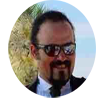
Director Projects at Ilyas & Mustafa Galadari Group
The most effective approach to this enquiry of yours is through many types of Studies especially regional demand & supply / feasibility studies !
If you want to sum it to 3 steps only ( which I won’t recommend, but will try):
1- landing a remarkable concept.
2- refining the actual design with thrill attractions .
3- open many connections channels through providers & procurement.
Conclusion
A big thanks to everyone who contributed to the roundup. Please share if you found it useful!
And, just to recap, here are the results one more time…
1. Park Design (19 votes)
2. Market Research (18 votes)
3. Location (17 votes)
Starting theme park business is a “big” work, you may face a lot of problems even with our 50 industry experts.
Now it’s your turn, tell me what problem you have when opening theme park, or if you have good tip to contribute, welcome to send me emails at contact@sinorides.com.





